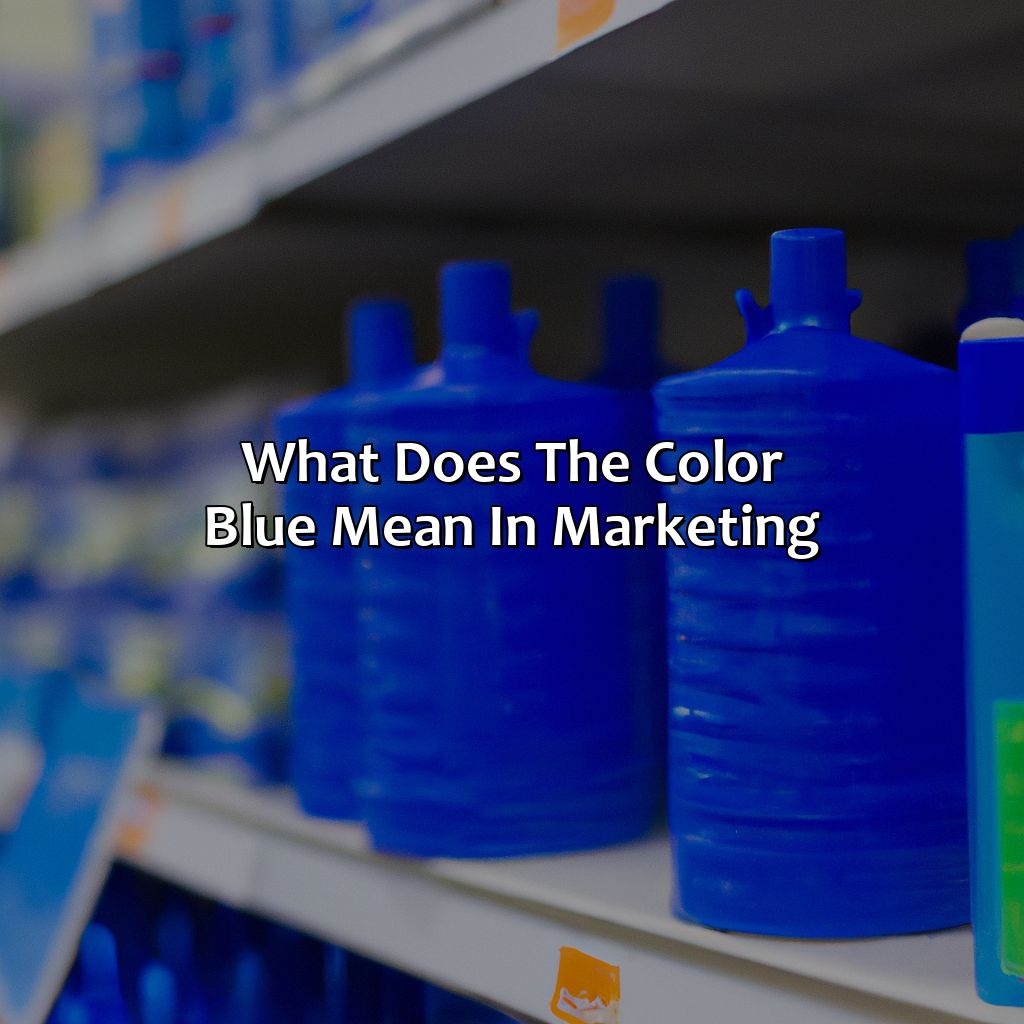Key Takeaway:
- Understanding the color red: Red is a vibrant and intense color that is often associated with love, passion, anger, danger, energy, and desire. It can convey different meanings depending on the context, culture, and personal experiences.
- Symbolism of the color red: The color red is known for its strong emotional impact and can represent different emotions and concepts such as love and passion, anger and danger, and energy and desire. It can evoke different psychological responses and affect our mood and behavior.
- Cultural meanings of red: Red holds significant cultural symbolism in various cultures, such as in Eastern cultures where it represents luck and prosperity, in Western cultures where it symbolizes love and romance, and in Indigenous cultures where it signifies power and vitality.
- Psychological effects of the color red: Red has been shown to have stimulating and energizing effects on the mind and body, and may increase appetite and attention. It can also induce feelings of arousal and excitement.
- Use of red in marketing and branding: Red is a popular color in marketing and branding due to its ability to attract attention and enhance visibility. It is often associated with sales and promotions, and used to convey excitement and urgency.
- Red in different aspects of life: Red is a versatile color that is commonly used in fashion, art, nature, food, drinks, animals, and flowers. It can evoke different emotions and create different visual effects depending on the context and combination with other colors.
Understanding the color red
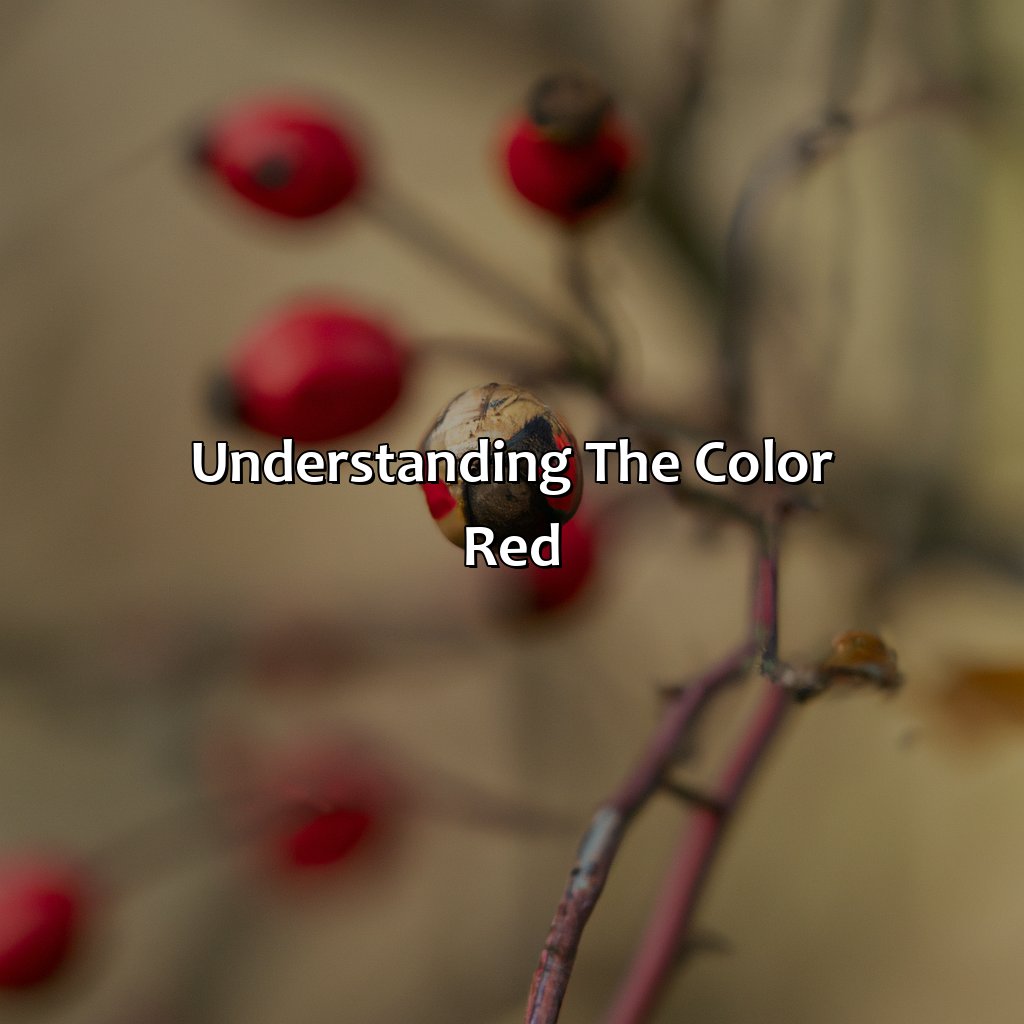
Photo Credits: colorscombo.com by Eugene Garcia
The Significance and Symbolism of Red
Red is a color that holds significant meaning and symbolism in various cultures and contexts. From its association with passion and love to danger and warning, the color red evokes a range of emotions and connotations.
The color red is often associated with passion, love, and desire, as it is the color of the heart and seen as a symbol of romance and sexual attraction. Red is also linked to intense emotions like anger and aggression, and is often used as a warning or signal of danger.
In addition to its emotional associations, the color red holds cultural and religious significance. It is an important color in Chinese culture, symbolizing good fortune, wealth, and happiness. In Christianity, red is associated with blood and sacrifice, representing the ultimate sacrifice of Christ on the cross.
Interestingly, red has even been shown to have physical effects on our bodies. It can increase heart rate and blood pressure, and has been known to stimulate appetite and increase energy levels.
Symbolism of the color red
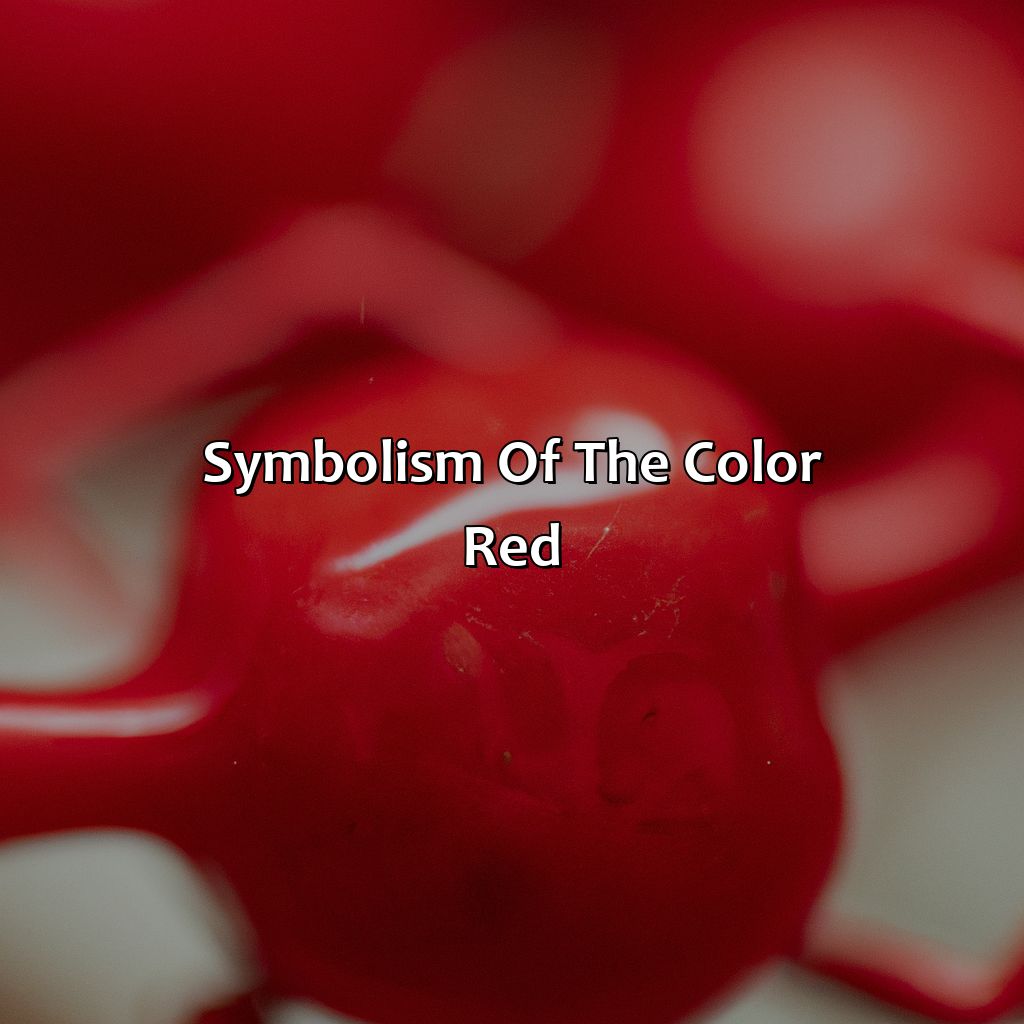
Photo Credits: colorscombo.com by Jordan Adams
Symbolism of the color red – want to know how this relates to your emotions? Let us explore! Red expresses a range of feelings. Love and passion, anger and danger, energy and desire – these are our sub-sections. Dive in and discover!
Love and passion
The color red evokes strong emotions of love and passion, making it a popular choice for romantic occasions. The deep intensity of the hue reflects the feelings of enthusiasm, desire, and excitement that accompany passionate romance. In various cultures, red is associated with celebrations of love and marriage ceremonies. This color symbolizes a connection to desire and carnal urges. The intense emotional pull towards someone can be highlighted by using red flowers or wearing red clothing.
Red ignites passion and sparks attraction. This is why it’s often linked to symbols of love such as hearts and roses. Weddings in different cultures abound in the presence of shades of red—from brides wearing bright red gowns to wedding cars decked with bows in varying hues of crimson. In marketing, companies selling products promoting affection employ shades of red in packaging design.
Moreover, just like how we associate the color green with nature, our association with shades of red for amorous connotations is somewhat based on evolutionary psychology principles. Our bodies are physically programmed to react to certain colors; our hearts racing when exposed to vibrant colors such as red which represent excitement, adventure, and sensuality.
According to a study conducted by researchers at York University in Toronto, both men and women found their heart rates escalating when exposed to the shade while others commented feeling flushed or aroused after a fleeting glimpse at another person sporting an outfit splashed with scarlet.
Red: The warning label for emotions you don’t want to mess with.
Anger and danger
The color red is steeped in the symbolism of anger and danger. This intense hue connotes negative emotions like aggression, fear, and threat. Its association with such deep-rooted emotions is why many people tend to feel uncomfortable or uneasy when they see too much red.
Red has a unique ability to evoke a sense of danger and urgency in people. Due to its vibrancy, it can symbolize anything from warning signs to emergency signals. Red can stimulate anxious feelings because it triggers our anxiety response subconsciously.
Other than its association with anger and danger, red is also linked with strong emotions like passion and love. It represents heat, energy, and life force in human psychology due to which this color connotes excitement as well as stimulation.
To balance out the negative consequences of the color red’s emotional impact, many psychologists recommend combining it with cooler hues like blue or green. By blending warmer tones with these colors in appropriate ratios, one can achieve visual symmetry without causing an overwhelming response in viewers.
Therefore, when used carefully and creatively by marketers or other professionals alike, the color red can be an effective tool for commanding attention and evoking powerful reactions that enhance brand recognition and recall.
Red: the color that makes you feel like you’ve had three shots of espresso, even if you’re just looking at it.
Energy and desire
Red is known to symbolize energy and desire. This vibrant color has been shown to have a stimulatory effect on human beings, inducing feelings of excitement and arousal. Red is often viewed as a passionate color that relates to strong emotions, such as love and anger.
Studies have found that the color red can increase heart rate and blood pressure, leading to a sense of heightened excitement and enthusiasm. It has also been shown to increase attention span and appetite, making it a popular choice for restaurants and food brands.
The intense nature of the color red can be attributed to its association with both fire and blood in many cultures. Eastern cultures view red as a symbol of good luck and fortune, while in Western culture it is often associated with love and danger simultaneously. Indigenous cultures also hold unique beliefs about this dynamic color, associating it with vitality and strength.
To incorporate the energy and desire associated with red into marketing efforts, popular brands often use this bold hue in their logos or featured products. The vibrant nature of red draws attention easily while conveying a message of urgency or excitement.
If seeking to evoke feelings of energy and desire through design choices, consider using shades of red in bright or bold contrast alongside neutral tones. While overly bright effects may have negative side effects such as overstimulation, incorporating tasteful accents can create an overall impression that evokes energy in your audience without overwhelming them unnecessarily.
Red is more than just a color, it’s a cultural statement that speaks volumes without saying a word.
Cultural meanings of red
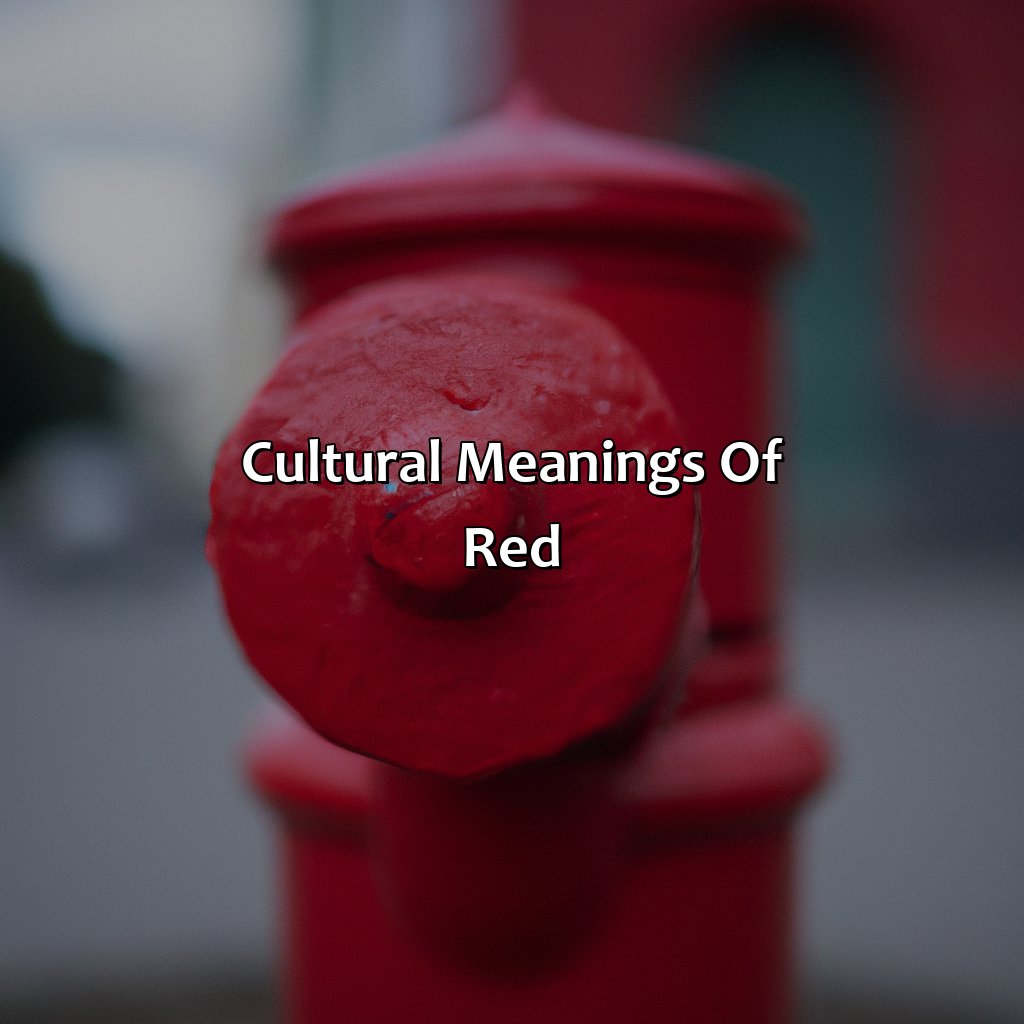
Photo Credits: colorscombo.com by Terry Jackson
Discover the cultural importance of red! In Eastern cultures, red has positive connotations. In Western cultures, red holds many different meanings. Lastly, in Indigenous cultures, red has spiritual significance.
Eastern cultures
Red has significant cultural meaning in countries like China and Japan. For example, the Chinese regard red as the color of fortune and joy. They believe that it brings good luck to individuals, especially during the New Year festival where everything from buildings to clothes are decorated in Red. Similarly, in Japan, red is considered an auspicious color associated with love and happiness.
In some Eastern cultures, however, red can also signify danger and warning signs such as “stop” signals on traffic lights or indicating danger on road signs.
To embrace Eastern culture practices of respecting ‘red’, businesses can use it in their branding or promotions while maintaining cultural awareness; considering symbols behind them such as Yin-Yang colors if stereotypes represent harmony or one’s perspective.
Overall, red has long been appreciated by Eastern cultures for its vibrancy and cultural significance. Its symbolic meanings can be incorporated creatively into marketing campaigns targeting these audiences whilst ensuring respect towards various traditional beliefs which really brings out diversity in customers preferences.
Red is so popular in Western culture, it’s practically the unofficial color of stop signs, Valentine’s Day, and embarrassingly sunburnt tourists.
Western cultures
In western culture, the color red holds a multifaceted meaning and is often associated with passion, love, danger, and anger. It is also seen as an energetic and stimulating color, symbolizing desire and excitement. The use of red is widespread in branding and marketing, as it enhances visibility, grabs attention and conveys urgency.
Moreover, Western cultures have long used the color red in celebrations such as Christmas, Valentine’s day and Independence Day. Red roses are commonly given on Valentine’s day to symbolize love and affection. In addition to this, red has been used to represent political movements such as communism and socialism.
Red in western cultures can be traced back to ancient Rome when men would wear red tunics signifying wealth and high class. The Catholic Church has also played a significant role in popularizing red symbolism with its use of cardinal robes.
Overall, Red plays a prominent role in Western cultures conveying various meanings throughout history adding depth to its cultural significance today.
Red is not only a color, it’s a symbol of power and vitality in many indigenous cultures.
Indigenous cultures
Red in Indigenous cultures holds a significant symbolism. Many tribes associate this color with spiritual significance, particularly in healing ceremonies. In Native American culture, red symbolizes protection, strength, and vitality. It is often used in garments and accessories worn during sacred rituals and dances. The Haida people of the Pacific Northwest use red cedar wood to carve masks and totem poles, which represent tribal history and beliefs. Red is likewise greatly admired by many other Indigenous cultures for its vibrancy and vitality.
Feeling lethargic? Add some red to your life to energize and stimulate your senses.
Psychological effects of the color red
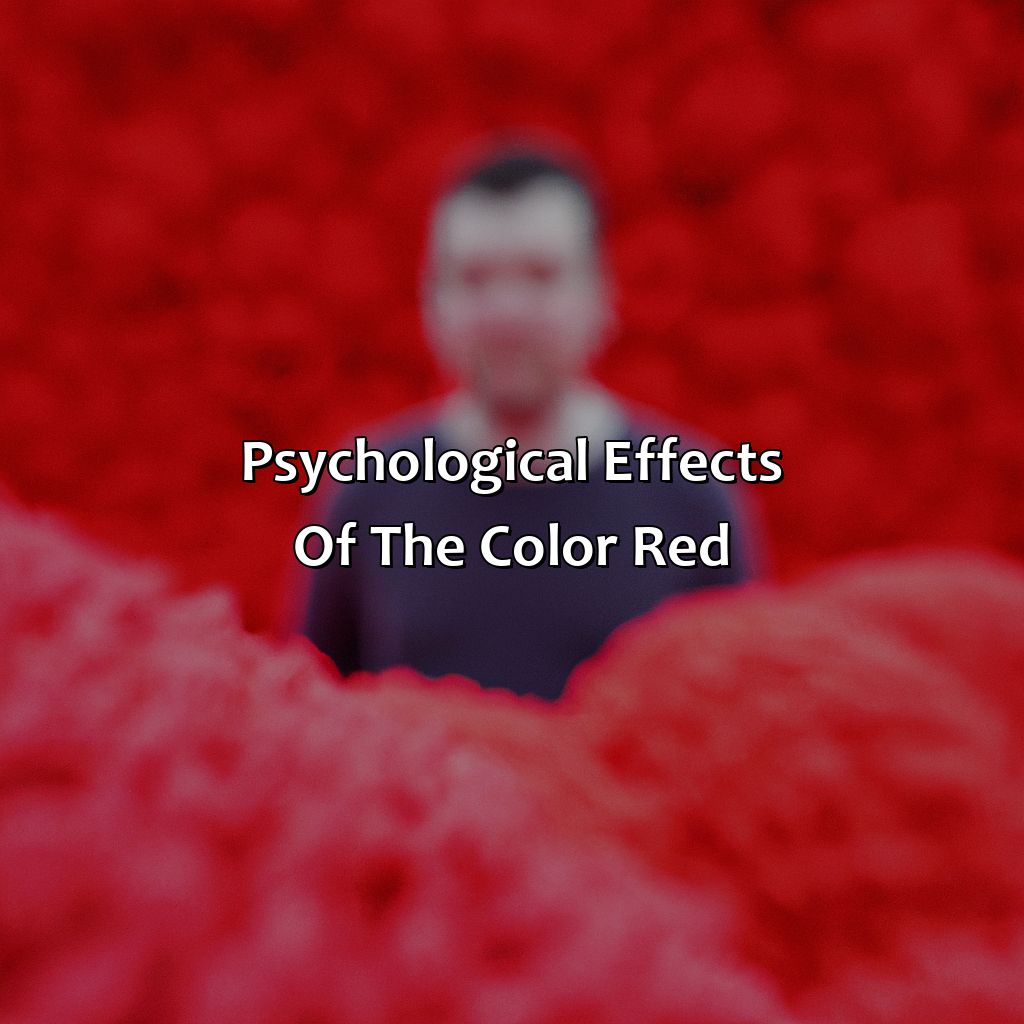
Photo Credits: colorscombo.com by Dylan Nelson
Gaining insight into the psychological impacts of the color red requires understanding its effect on our emotions. Red is renowned for stimulating and energizing us. Plus, it increases appetite and attention. Additionally, red induces feelings of excitement and arousal. To delve further, let’s examine the three subsections which explain each aspect in-depth.
Stimulating and energizing
Red is widely known for its stimulating and energizing effects on human emotion, behavior, and physiology. It has been found to increase heart rate, speed up breathing, enhance physical strength and stamina, and release adrenaline in the body among other effects. This dynamic color undoubtedly triggers a sense of excitement and invigoration in people of all ages and backgrounds.
One intriguing fact about the color red is that it evokes powerful physiological responses that may be beneficial or detrimental depending on the context. The intense shade can instantly trigger our amygdala (the part of the brain responsible for processing emotions), activating our fight-or-flight response. This is why we often associate red with danger or anger. However, it can also signal opportunity, passion, warmth, and love.
In marketing and advertising, red is a popular choice for creating strong impressions on consumers. Brands use this hue to lure shoppers to take action by conveying a sense of urgency or high-value sales promotions. Red logos and packaging are especially effective at grabbing attention and enhancing brand recognition on digital platforms where one must stand out amidst all competition.
The influence of red on our psyche runs deep across cultures due to its enduring nature since prehistoric times. Healing practices such as Ayurveda have long embraced the energy-enhancing power of this color to balance imbalances in mind-body health. In ancient Chinese culture, Red symbolized celebration where both financial prosperity was combined alongside good fortune. Overall, incorporating this powerful hue into one’s life wisely can yield incredible positive results towards boosting motivation levels while reducing laziness– it’s no wonder psychologists recommend exposing oneself more frequently to red!
Red may make your heart race, but it’s your appetite and attention that will really be on fire.
Increases appetite and attention
Research suggests an intriguing association between the color red and the human appetite. This vibrant hue can influence our eating habits by triggering feelings of hunger and making us more alert to food.
- Studies show that simply looking at images of red foods can stimulate appetite, leading individuals to consume larger portions than they would normally.
- The color red can also increase attention, which may result in people focusing on their meals for a longer time instead of being distracted by other things – and even enjoying the experience of eating more.
- Interestingly, fast-food chains like McDonald’s and KFC happen to use the color red prominently in their branding as it’s been linked to increasing hunger and making customers want to eat quickly.
- In research published in JAMA Internal Medicine back in 2014, scientists found out that diners provided with meals on red plates consumed less overall than those given identical amounts of food on plates of other hues. On a psychological level, it could be an indication that appetizing colors trigger a desire for food while unappetizing colors encourage selective eating or smaller portion sizes.
- Avoiding the color red altogether might not always be practical, but people looking to limit their caloric intake may benefit from being mindful not just of what they’re eating, but also the color scheme surrounding them when they dine out or stock up their pantry.
It’s worth noting; this phenomenon is not limited to food or dining settings alone as research suggests Red plays a role in capturing and keeping people’s attention which has led businesses across various sectors to adopt this hue as part of their branding strategy.
Lastly, there have been instances where using contrasting colors with the color Red has shown better results for reducing mindless consumption. One such example is green cues (green border around calorie information) incorporated into menus, which have been shown to reduce caloric intake.
Red: the color that can make you both hot and bothered.
Induces feelings of arousal and excitement
Red has the ability to evoke deep emotions and can induce an intense feeling of arousal and excitement. It stimulates blood circulation, increases heart rate and breathing, making it a symbol of energy, power, and passion.
The color red is often associated with love, romance and sensuality which further enhances its appeal as an exciting color. This appeal can be seen in various contexts such as in fashion, where red is chosen to make a statement or attract attention.
In addition to physical excitement, the color red also triggers psychological sensations. Studies suggest that upon seeing the color red, people tend to become more competitive and assertive. It can also increase impulsivity and encourage risk-taking behavior.
It has been observed that the use of bright red colors in restaurants leads to an increase in appetite and turnover rates while also encouraging customers to spend more money. This effect is useful in marketing where the color red is used to attract attention to sales promotions that create feelings of urgency.
According to a study published by the University of Rochester, wearing red clothing can significantly affect one’s attractiveness level while simultaneously conveying confidence and dominance.
Overall, whether it is used in branding or personal style choices, the color red stands out for its ability to induce feelings of excitement and arousal making it a valued choice for capturing attention.
“Red is the marketing equivalent of a bull in a china shop – it grabs attention, demands action, and leaves a lasting impression.”
Use of red in marketing and branding

Photo Credits: colorscombo.com by Terry Brown
Red is a great solution for captivating your audience in marketing and branding. It attracts attention and increases visibility. It’s associated with sales and promotions, and conveys excitement and urgency.
To understand how red is used in marketing, branding, and advertising, let’s explore these 3 sub-sections:
- Attracting attention and enhancing visibility.
- Associating sales and promotions.
- Conveying excitement and urgency.
Attracts attention and enhances visibility
The color red effectively catches an individual’s eye and improves the visibility of any object or text. Its vibrant and bold hue resonates with humans’ primal instincts, thereby making it very difficult to ignore. The use of red in any marketing or branding strategy can increase product visibility, leading to a higher level of attention.
Furthermore, studies suggest that individuals are more likely to remember items with a striking color such as red in comparison to muted or dull colors. The significance of this statement in the business world is immense since a memorable brand logo can significantly impact sales and consumer loyalty.
Pro Tip: When designing logos, advertisements or covers for products such as books or music albums, ensure that you incorporate the color red strategically as it may improve your product visibility.
Seeing red will make you spend green, or at least that’s what marketers want you to believe.
Associated with sales and promotions
Sales and Promotions have a strong connection with the use of the color red in marketing and branding. This powerful hue has been embedded in consumer culture as an indicator of special deals, clearance offers, and exciting discounts. Understanding the psychological effects of color can be leveraged to create a sense of urgency, excitement, and enthusiasm in consumers’ minds.
Here are six points that highlight how red is associated with sales and promotions:
- Red stands out against most backgrounds and enhances visibility.
- It has been proven that bright colors such as red attract customers’ attention far more than dull ones.
- The use of red often signifies special offers and discounts that lead to higher sales conversions.
- The color evokes feelings of high energy and dynamism, leading to greater willingness on the part of customers for splurging on products or services they may not have considered earlier.
- It is associated with urgency due to its connotations with danger alarms or emergency situations, which drives impulse buying behavior among customers.
- The use of red during key sales season helps brands stand out in crowded marketplaces where being noticed can make all the difference in terms of revenue generation.
It is important to understand that overuse or misuse of this color can lead to desensitization among customers or worse still negate any positive impact it might have had initially.
One overlooked phenomenon is that while most companies leverage the uplifting vibes associated with the color as part of their branding strategy for promotions – there are some businesses using a completely contrary approach. There are examples wherein brands tone down their usage of this vibrant hue leading up to key festive holidays like Christmas because there exists intense competition for consumers’ finite resources.
The luxurious British department store Selfridges removed all traces of red from its stores during December 2017; a move announced via a marketing campaign cleverly positioned around ‘Not Red. But Still Christmas’. Replacing the brand’s traditional red logo, signage and lighting with yellow was done to achieve a modern festive feel and branding change while still associating it with the festive season.
This shows that while red may be a color predominantly linked with promoting sales and discounts, smart brands are experimenting with toning down its usage to stand out in an overcrowded market that is fraught with intense competition during the busy holiday season.
Red: the color that screams ‘BUY NOW’ louder than any car salesman ever could.
Used to convey excitement and urgency
Marketing experts often use the color red to generate feelings of excitement and urgency in their audience. This vibrant hue immediately grabs attention and encourages customers to take action, making it the perfect choice for promotional campaigns aiming to create a sense of immediacy. Red packaging and signage can give an impression of emergency or necessity, prompting consumers to act quickly. By tapping into human emotion and instinct, marketers can successfully leverage the power of red to evoke a sense of excitement and importance in their target audience.
Moreover, strong emotions such as passion, anger, and desire have long been associated with the color red, meaning that brands can use this association to differentiate themselves and create recognizable identities. Companies like Coca-Cola have utilized bold red branding for decades to create strong emotional ties between their products and their consumers.
However, it’s worth noting that overuse of this color can also lead to negative associations such as aggression or danger. Therefore, careful consideration should be given when deciding how much ‘red’ is appropriate for branding purposes.
In 2017, fast food chain Burger King launched a clever campaign that demonstrates the power of using red in marketing. The company offered free Whopper burgers to anyone who could dress up as a clown on Halloween night – an event that is strongly associated with the color red (thanks largely due to Stephen King’s iconic horror movie). The cryptic promotion was shared widely online generating tons of buzz around Burger King’s brand with many people engaging with the company on social media.
Red is the ultimate statement color, whether you’re dressing it up, painting it on a canvas, picking it from a garden or drinking it in a wine glass.
Red in different aspects of life

Photo Credits: colorscombo.com by Gregory Lewis
Grasp the importance of red in existence! Check out the realms of fashion, art, nature, food, beverages, animals, fish, blossoms, and shades. Each one offers exclusive understanding into the role that red has in shaping our encounters. From bold red garments to eye-catching red pictures, from red hot chili peppers to succulent red prawns, learn the varied techniques in which the color red improves our lives.
Red in fashion
Red is a bold and attention-grabbing color that has become a popular choice in the fashion industry. This vibrant hue has been used in various ways to add an extra element of excitement or sophistication to outfits.
From chic red dresses to statement accessories, red in fashion has endless possibilities for creating a striking look. The use of red in clothing can convey various emotions and attitudes, such as confidence, passion, power, and adventure.
Not only does the color red make a powerful statement in fashion, but it also has psychological benefits for the wearer. Studies have shown that wearing red can increase self-confidence and attract positive attention from others.
Pro tip: A little bit of red goes a long way – if you’re new to incorporating this color into your wardrobe, start with small accessories like a red bag or shoes before experimenting with bolder pieces.
Artists love red because it’s the color that says, ‘Look at me, I’m important!’
Red in art
Red has been employed in various forms of art for centuries, including painting, sculpture, and photography. Artists have used the color red to evoke a range of emotions in their viewers, from love and passion to anger and danger. The use of red in art can also convey energy, desire, and excitement. This versatile color has been utilized throughout history for its emotional impact on viewers.
In classical art, the color red was often used as an accent color to draw attention to particular elements within a work. Renaissance artists such as Titian and Veronese were known for their dramatic use of the color red in their works, which conveyed richness and opulence. Modern artists have employed the color red in abstract works and installations to explore its emotional and symbolic significance.
Beyond its purely aesthetic qualities, red is employed by artists as a tool for storytelling or conveying meaning. For example, Venus de Milo wearing a delicate shade of gray-blue would not be as compelling without her outstretched arm draped in vivid blood-red fabric.
One famous usage of red in art is the iconic logo for Coca-Cola – featuring bold letters in white against a bright scarlet background – is instantly recognizable worldwide. Red symbolizes the brand’s bubbly nature while conveying urgency that prompts customers’ thirst impulse.
The history of how red came into fashion provides insights into why it remains popular today. From its prehistoric origins through Roman times when alizarin dye was imported from India becoming popular until the 20th century with Tolouse-Lautrec’s fantastic posters advertising cabaret shows at Moulin Rouge. Red has proven itself an indispensable hue to represent everything from passionate love affairs between lords and ladies atop thrones; We can see this rich legacy reflected today through evolving artistic styles like pop-art or street-style graffiti splashing big splats of colorful paint across city walls!
Nature has a thing for red, from the fiery hues of sunset to the crimson petals of a rose.
Red in nature
The vibrant color red can be prominently seen in nature. This color is widely associated with the natural world and its elements. Red flowers such as roses, poppies, and tulips are some of the most popular ones that signify love, passion, and affection. Along with flowers, several animals in nature such as cardinals, flamingos, and ladybugs also exhibit the beautiful shade of red.
Red in nature has been used by scientists to study the behavior and interactions between species. Biologists have found that many creatures in nature use vivid colors as a form of communication to attract a mate or display aggression towards predators. The adaptation of using the color red helps these organisms to survive in their environment.
Apart from scientific reasons, humans have also used red from nature for various symbolic meanings. The ancient Greeks associated red roses with their goddess Aphrodite while Native Americans used red dye made from berries for their sacred ceremonies.
A true story about red in nature is how an orchid got its bright colored petals due to its pollinator. The brilliant-red orchid only blooms when it’s pollinated by hummingbirds which are attracted to the color red.
Red in food – adding some color to your plate, or just a warning sign for fiery flavors and potential stains.
Red in food
The color red in food has an undeniable presence and appetizing appeal. Red foods such as red wine, apples, chili, peppers, tomatoes, berries, meat and seafood like lobster, prawns, snapper and mullet are popular choices. The bright hue of these foods is attributed to the presence of lycopene which is known to have antioxidant properties. Red beans, lentils and rice are also commonly consumed for their nutritional value. Interestingly, red onions, cabbage, beetroot and carrots are not only nutritious but add color to dishes too.
Real enthusiasts of red meat can be lovers of beef or game meats such as venison or bison because they are dense with a unique flavor. The taste profile varies depending on the cut of meat: steaks provide a different taste compared to burgers or ground meatballs.
Pro Tip: Cooking with red ingredients can leave stains on clothing or surfaces so handle with care when preparing dishes!
Red in drinks may stimulate your taste buds, but too much can leave you seeing red in more ways than one.
Red in drinks
Red in beverages is a common feature across the world, as it adds to the aesthetic appeal and can also convey various meanings. The color red is often associated with energy, passion, and excitement, making it a popular choice for drinks aimed at young adults or those seeking a zingy experience. Furthermore, the redness of certain drinks can indicate their ingredients or flavors, such as cranberry or pomegranate. The use of red in beverages can also be traced back to cultural significance in some regions.
In terms of alcohol-based drinks, red wine is perhaps one of the most well-known examples that embody the color red. Red wine owes its hue to the presence of grape skins during fermentation, which extract pigments that give it a deep-red tone. On the other hand, cocktails such as Bloody Marys and Tequila Sunrises derive their color from specific ingredients like tomato juice and grenadine syrup.
It is also worth noting that natural ingredients like hibiscus and beetroot have been increasingly employed by beverage makers worldwide to infuse an intense red hue without resorting to chemical colors. Red-colored caffeine-laden energy drinks are also highly popular among youngsters due to their stimulating qualities.
In traditional Chinese culture, drinking warm flower tea (Red Date tea made with dates boiled in hot water) is believed to strengthen one’s Qi or life force since ancient times; similarly, India’s chaas, which is made using buttermilk blended with spices like ginger and chili powder(may have a pinch of food coloring too), has strong cooling properties according to Ayurveda practices.
Drinks companies around the globe use symbolism associated with red – passion, love, danger – strategically. Red marketing strategies seek attention through association with promotions and sales promotions focused on impulse buys involving energy-boosting effects on oneself upon consumption of such drinks lightens mood.
In Turkey and other parts of Europe serving Hibiscus tea during weddings also adds to the beauty of the ceremony, and holds an indicator to fertility. In some parts of Africa, Hibiscus tea infused with juices is slowly rising as a replacement for alcoholic drinks due to its health benefits.
Moreover, a well-placed study indicates that drinking red wine in moderation can positively impact heart health. While cocktails like Bloody Marys have been found to increase cognitive performance and work productivity attributed to their bold red color.
For many people around the world, there is no doubt that red beverages are both comforting and engaging experience enhanced by the physical appearance of the drink itself. Thus Red in drinks represents different meanings in different cultures and carries a lot of weight in marketing strategies varying from energy-boosting properties to symbolic associations making it one of the most popular colors when it comes to food colorization.
Red in animals and nature: proof that sometimes, Mother Nature just wants to turn up the heat.
Red in animals and nature
Found in animals and nature, the significance of red is immense. The bright hue represents a wide range of creatures from birds to insects. In nature, it is the color of blooming flowers such as roses, poppies and peonies. Red in animals helps them to camouflage into leaves or attract attention for mating purposes.
Red in animals and nature is not just limited to aesthetics. It also has many uses for survival purposes. Some species use red as an alert mechanism to signal danger, such as poisonous ladybugs or fire ants.
If you observe cherry blossoms you can see that their bright red hue symbolizes the essence of life itself. Different shades convey meaning from excitement, passion, and energy to danger or anger.
Looking at all these aspects, we feel the urge to explore more about this color’s deep symbolism both in human societies and its irreplaceable place in nature. Keep up with us for more insights on the influence of red on our lives!
Red in flowers: nature’s way of saying ‘I love you’ with a touch of danger.
Red in flowers
The color red in flowers creates a stark contrast when combined with other colors which can enhance their beauty even more. Red marigolds, for instance, create an intense aura when they are used alongside pinks or yellows. This vibrant color combination makes them ideal for decorating events and celebrations.
Different cultures perceive the red color differently. For instance, in the Eastern culture, red signifies joy and prosperity while indigenous cultures tend to perceive this color as an indication of rich earthy tones and cultural rituals.
Pro Tip: When arranging a floral bouquet with red colored flowers, ensure that you use some contrasting shades to help bring out the beauty that these vivid tones have to offer.
Some Facts About the Color Red:
- ✅ Red is associated with energy, passion, and love. (Source: Color Psychologist)
- ✅ Red is the most eye-catching of all colors, which makes it a popular choice for sales and marketing campaigns. (Source: New York Times)
- ✅ Some cultures associate red with good luck and prosperity, while others view it as a symbol of danger or warning. (Source: World Atlas)
- ✅ The color red is used in many different contexts, such as warning signs, traffic lights, and emergency vehicles. (Source: Psychology Today)
- ✅ Too much exposure to the color red can lead to feelings of anger, irritation, and stress. (Source: Verywell Mind)
FAQs about What Does The Color Red Mean?
What does the color red mean?
The color red is often associated with strong emotions like love, anger, and passion. It can also represent danger, warning, or urgency.
What cultural meanings does the color red have?
In many cultures, the color red is associated with good luck, happiness, and prosperity. In China, for example, red is seen as a symbol of wealth and good fortune, whereas in some African cultures, the color red represents sacrifice and mourning.
What are some psychological effects of the color red?
Red can be an energizing color that evokes feelings of excitement and aggression. It can increase blood pressure, heart rate, and respiration, and has been shown to enhance athletic performance but also can be overwhelming or intimidating.
What industries typically use the color red in branding?
Many industries use the color red in branding, including food and beverage companies (e.g. Coca-Cola), entertainment companies (e.g. Netflix), and sporting goods companies (e.g. Nike). Red can be a powerful and attention-grabbing color that can elicit strong emotions and associations from consumers.
What colors complement red?
Red is a bold, vibrant color that can work well with a variety of complementary colors. Some popular color combinations include red and white, red and black, red and gold, and red and silver.
What is the history of the color red?
In ancient cultures, red was often associated with power, status, and royalty. In medieval Europe, red became a symbol of wealth and prosperity, and it was often used in the clothing of the wealthy and powerful. The color red has also been associated with religious and political movements throughout history.





